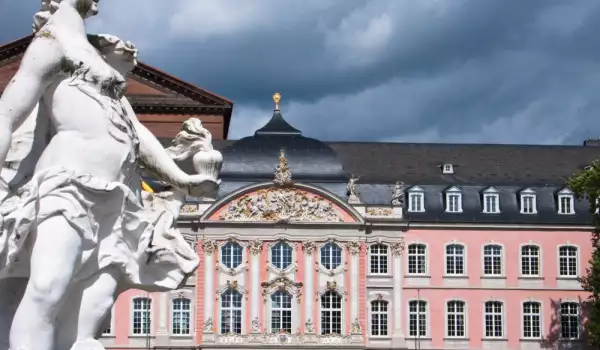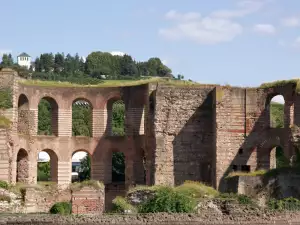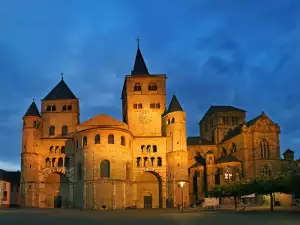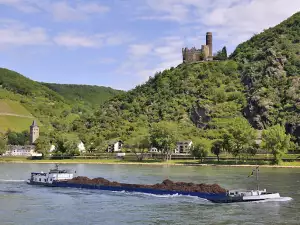Trier

Trier is considered the oldest German city, which stems from the 16th century BC. Many settlements on the territory of Germany claimed the position of most ancient city, but only Trier has the longest history as an independent city. Trier is located in the picturesque valley through which the Moselle River flows. Around the natural image are fertile hills and many vineyards.
The town is located on the west bank of the Moselle River in the German state of Rhineland-Palatinate. Very close to Trier is Germany's border with Luxembourg.
Nearby is a famous wine region - Moselle-Saar-River that after 2007 is called only by the name of the Moselle river. This is one of the 13 wine regions of Germany, which produce premium wines. This region around Trier is ranked third in production in the country, but by quality and popularity, it takes the first position in international popularity and prestige. Today's name of the city Trier name comes from the Gallic tribe Treveri that has been gradually altered, passing through the Latin name of the city Augusta Treverorum.

As mentioned, archaeological evidence attests to the settlement of the area around today's Trier even centuries BC. Between 58 and 50 BC, the Roman Empire led by Julius Caesar at that time conquered Gallic tribes of Treveri. In place of the sanctuary on the right bank of the River Moselle in 30 BC was a Roman military camp. In 16 BC Augustus decided to form the city Augusta Treverorum, which translates as "city of Augustus in the country of the Treveri". Then Trier was the capital of the Roman province Belgika. In 259-274, Trier is the capital of the breakaway Gallic Empire and was destroyed by Alemans in 275.
At the time of Diocletian, who lived and ruled between 284-305, this is the capital of the prefecture of Gaul and is one of four capitals of the empire. Emperor Constantine the Great turned the ancient village of Trier into a capital. From 328 to 340, it was the residence of Emperor Constanse II, and in 367 was the residence of Valentinian I and the Western Roman emperors to the death of Theodosius I in 395. Trier was captured several times by the Franks (around 413 and 421) and the Huns of Attila in the 5th century.

In the 9th century, Trier is mainly an archiepiscopal seat, and receives city status in the second half of the 12th century. Medieval Trier boasts as a prestigious enlightenment center, because from 15 to 18 century, in the city functions the University.
In 1794, Trier became part of the possessions of France, and from 1814 to 1815, of Prussia. During World War II, Trier suffered serious damage as a result of bombing. After the war, it falls to the French occupation zone, and since 1949 has been part of the composition of the FRG.
Among the sights that you should see in Trier is the Roman city gate north of the Alps, which is known as the Porta Nigra. Also here you can see some of the best remaining urban baths of Roman times. Among the historical monuments falls the protestant church in Trier, which is actually the former Constantine Basilica.
The beautiful temple reaches a height of 67 meters. Inside it you can see the large throne hall of Roman Emperor. Especially beautiful and attractive is the cathedral of Trier, which is considered the oldest Catholic church in Germany and the largest religious building in the territory of Trier. Its architecture is markedly Gothic; this beautiful and invaluable cultural and historical monument is included in the UNESCO list of World Heritage Sites in 1986














